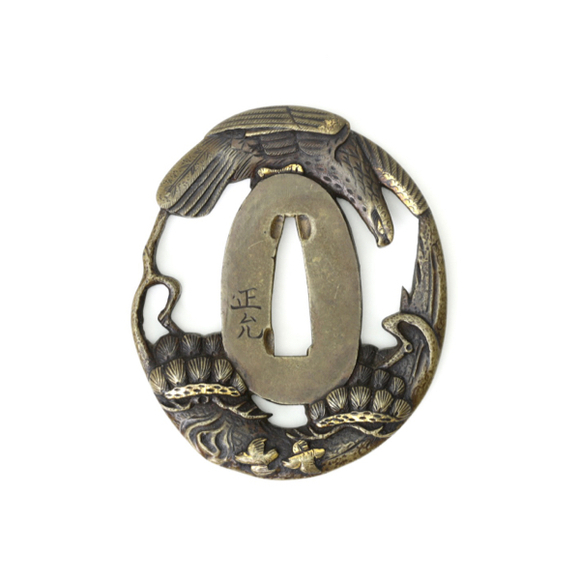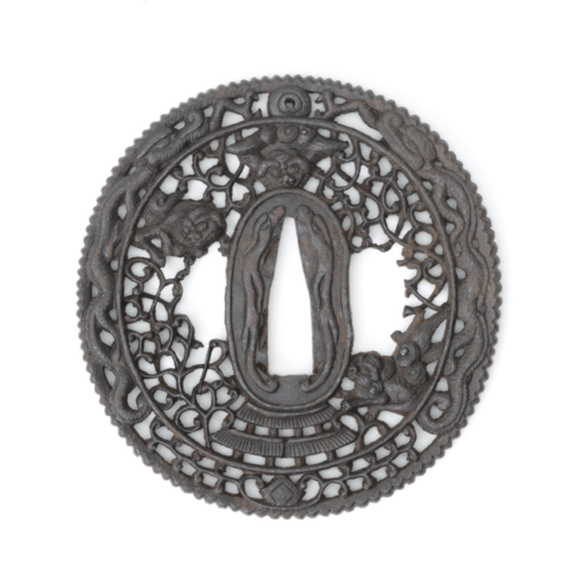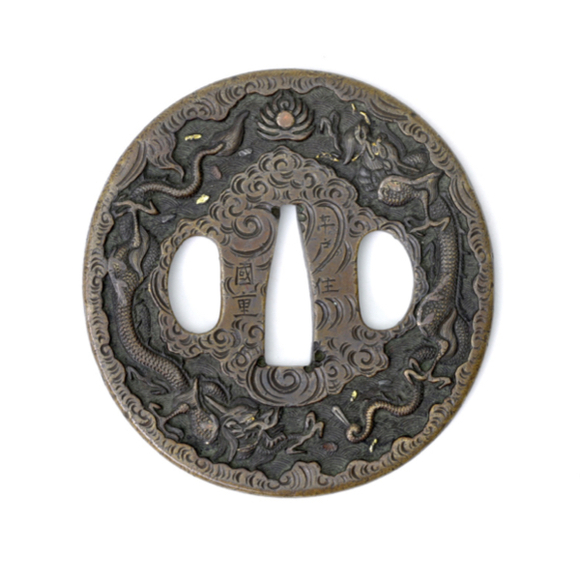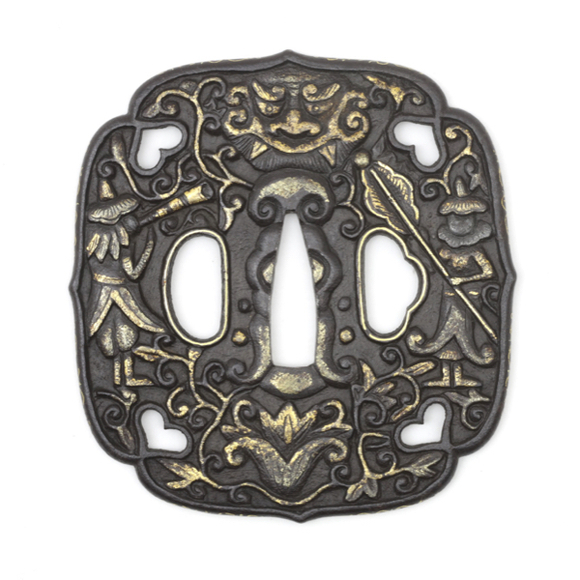Russet iron, one-piece construction with decorative grooves.

73 x 72 mm
thickness 5.5 mm
123 grams
Iron, copper alloy, gold
Probably Hizen
Description
Made of a circular forged iron plate. The punched indentations around the tang opening (nakago-ana) indicate that it has been mounted. The kogai-hitsu-ana, the opening for the kogai, a hair arranging tool, is on the left. This was of carrying conceals it when the sword was worn. Normally they tend to be on the right, so the work on their hilts would be shown off.
Its most prominent feature is the depiction of a red-faced Daruma, also known as Bodhidarma. The red color is achieved by creating a specific copper alloy and then artificially patinate it with a recipe of chemicals. The exact alloys and recipes were often secrets within schools, not shared with the uninitiated.
He is a Buddhist monk of legend who lived somewhere during the 5th or 6th century. He presumably brought Buddhism to China and founded the rigorous school of Chan Buddhism that was practiced at Shaolin Temple. Later, Chan got widely adopted in Japan, better known as Zen. Little reliable information is known about him, but most accounts agree that he was non-Chinese, came from the West, either Persia or India, and some state he was blue-eyed.
To his left is a fly whisk, rendered in the negative space.
The top of the tsuba is carved with two dragons, their mouths joined holding a sacred jewel or tama. The jewel as well as the dragon's eyes and some portion of their scales are damascened with gold.
The whole is in the theme of a mokugyo, or "wooden fish", an East Asian type of wooden drum used by various Buddhist sects. In Zen Buddhism, it is used to keep the rhythm in sutra chanting.1
School
Probably work by a Hizen school, judging from the dragons.
Notes
1. Thanks to Garrett McCormack for pointing out both the fly whisk and the mokugyo theme.






Unusual tsuba with foreign figures and Chinese auspicious symbols.






